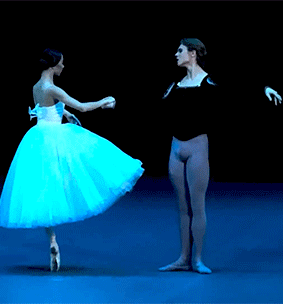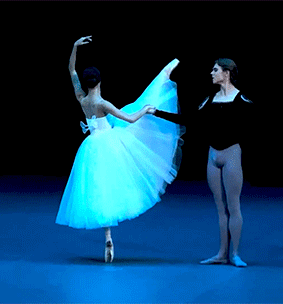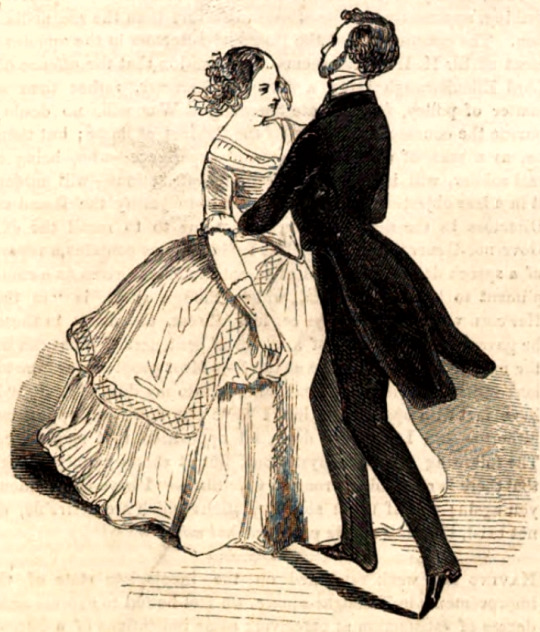#Carlotta Grisi
Explore tagged Tumblr posts
Text

2 notes
·
View notes
Photo

Portrait of Carlotta Grisi in Giselle, 1841 by Theophile Gautier (1841, pastel)
#art#artwork#kunstwerk#kunst#theophile gautier#carlotta grisi#giselle#portrait#fairy#fee#dancing#tanzen#wings#flügel#mythical art#mystische kunst#mythical creature#mystische kreatur#woman#frau#flowers#blumen#ballet
10 notes
·
View notes
Text

Carlotta Grisi carnevale 1847. From the New York Public Library.
#carlotta grisi#art#1800s#19th century#ballet#italy#vintage#antique#aesthetic#dark academia#light academia#europe#antique art#vintage ballet#academia#historical art
7 notes
·
View notes
Text
ELIZAVETA KOKOREVA
Born in Moscow into a family of the ballet artists. In 2019, graduated from the Moscow State Academy of Choreography (class of Tatiana Galtseva) and joined the Bolshoi Theatre Ballet Company. At the end of 2021-22 season she was promoted to the leading soloist, in 2023 — to the principal dancer. At first she rehearsed under the supervision of Nadezhda Pavlova. Currently her teacher is Maria Allash.
Bolshoi Theatre • Elizaveta Kokoreva
DANIIL POTAPTSEV
Born in Saint Petersburg. In 2022, graduated from St. Petersburg Boris Eifman Dance Academy (class of Maxim Prokofiev) and joined the Bolshoi Ballet Company. In the 2022/ 23 season he was promoted to the soloist. Rehearses under the supervision of Vitaly Breusenko.
Bolshoi Theatre • Daniil Potaptsev
Giselle
Giselle is a romantic ballet in two acts with music by Adolphe Adam. Considered a masterwork in the classical ballet performance canon, it was first performed by the Ballet du Théâtre de l'Académie Royale de Musique at the Salle Le Peletier in Paris on 28 June 1841, with Italian ballerina Carlotta Grisi as Giselle. It was an unqualified triumph. It became hugely popular and was staged at once across Europe, Russia, and the United States.
Giselle - Wikipedia



Elizaveta Kokoreva and Daniil Potaptsev in Giselle.
260 notes
·
View notes
Photo

Carlotta Grisi as Giselle (1841)
19 notes
·
View notes
Photo

Marie Taglioni, Carlotta Grisi, Lucile Grahn, Fanny Cerrito
Pas de quatre
#ballet#ballet history#romanticism#pas de quatre#marie taglioni#carlotta grisi#fanny cerrito#lucile grahn
81 notes
·
View notes
Text
Eleonora Abbagnato,Teatro Massimo di Palermo @ Marco Glaviano
There are many, many Italian dancers scattered around companies throughout the world. Some are in the corps de ballet, others are principal dancers, but all continue the tradition that made Italian dancers some of the most famous of all. Even leaving the men aside, we have Pierina Legnani (noted as ‘maybe’ being the first to perform 32 fouetté turns) who was a prima ballerina assoluta at the Mariinsky; Giuseppina Bozzacchi who created the role of Coppélia for the Paris Opera Ballet when she was 16; Fanny Cerrito and Carlotta Grisi (together with Marie Taglioni – herself half Italian – and Lucile Grahn) who created the roles in Perrot’s Pas de Quatre in London; Virginia Zucchi (for whom Petipa created La Esmeralda pas de six), Carlotta Zambelli (the star of the Paris Opera Ballet for three decades), and more recent exports: Fracci, Ferri, Galeazzi, Durante, Savignano, Abbagnato and others who have become principal ballerinas with major international companies.
Eleonora Abbagnato in Puccini by Julien Leste © Rolando Paolo Guerzoni 01
Eleonora Abbagnato in Puccini by Julien Leste © Rolando Paolo Guerzoni
It is Paris Opera Ballet’s Eleonora Abbagnato (also director of the Rome Opera Ballet company) who heads the bill of Daniele Cipriani’s latest starry gala, this time for the 62nd edition of the Festival of Two Worlds in Spoleto, a town which has seen many of the world’s most famous dancers pass through over the last half-century.
The programme, curated by Cipriani, ranges from the great classical repertoire to pieces by important contemporary choreographers, as well as original creations by young Italian dance makers.
Joining Abbagnato in the line-up are Davide Dato, from Biella, who since 2016 has been First Soloist with the Vienna State Ballet (who will dance in George Balanchine’s Tarantella, which the company has in its repertoire); Gabriele Frola, from Aosta, who became principal dancer of the National Ballet of Canada and, at the same time, of the English National Ballet in 2018; and Rachele Buriassi, a soloist at Boston Ballet.
Davide Dato 2017 © Cositore
Rachele Buriassi in Don Quixote © Stuttgarter Ballett
Davide Riccardo
Gabriele Frola © Aleksandar Antonijevic
There is also 18-year-old Davide Riccardo, from Messina, who graduated from the School of American Ballet and, since August 2018, has become the first Italian at the New York City Ballet (and will present Jerome Robbins’s Andantino as a tribute to the NYCB choreographer who also had strong links with Spoleto); as well as six Italian dancers from the Stuttgart Ballet: Fabio Adorisio, Daniele Silingardi, Alessandro Giaquinto, Matteo Miccini, Vittoria Girelli and Elisa Ghisalberti.
Coincidentally, the gala – on Sunday 30 June – coincides exactly with the tenth anniversary of the death of Pina Bausch, and Damiano Ottavio Bigi, who dances with the Tanztheater Wuppertal Pina Bausch in Germany, will present his own creation dedicated to the great choreographer and interpreter.
Contemporary choreographers are represented by Claudio Cangialosi, from the Vlaanderen Opera Ballet, who will dance a piece by Sidi Larbi Cherkaoui, and Sasha Riva and Simone Repele, formerly at John Neumeier´s Hamburg Ballet and now at the Ballet du Grand Théâtre de Genève, will perform a work by Marco Goecke.
Sasha Riva and Simone Repele
Claudio Cangialosi
Sasha Riva and Simone Repele
Damiano Ottavio Bigi
Rachele Buriassi in Jiří Kylián’s Wings of Wax © Rosalie O’Connor
There are also national premieres by young Italian authors whose talent has been acknowledged abroad: Alessandro Giaquinto and Fabio Adorisio, of the Stuttgart Ballet, present two creations, especially for the Spoleto Festival, danced by the six Italian dancers from the same company. Tommaso Beneventi from the Royal Swedish Ballet will dance with Buriassi (together with Giacomo Castellana of the Rome Opera Ballet) in a world premiere by Francesco Ventriglia on the music of Saint-Saëns’ Danse Macabre.
Among the (non-Italian) guest artists who complete the lineup are Nikisha Fogo and Liudmila Konovalova from the Vienna State Opera who will dance the Le Corsaire pas de deux along with the young dancer from La Scala, Mattia Semperboni, who set the stage alight in Milan recently as the slave. There’s also Friedmann Vogel from Stuttgart, Megan LeCrone from the New York City Ballet, Katja Khaniukova from English National Ballet and Nancy Osbaldeston from the Royal Ballet of Flanders.
Not only is there a fancy lineup – and quite unique – but the gala will be performed in the Piazza del Duomo with the stage backdrop being Spoleto’s stunning cathedral.
Nancy Osbaldeston 1
Nancy Osbaldeston 2
Liudmila Konovalova © Fotografia Massimo Danza 01
Liudmila Konovalova © Fotografia Massimo Danza
Eleonora Abbagnato con le Stelle italiane nel mondo – Sunday 30 June at 21.30.
Some tickets are still available: Festival Di Spoleto – Abbagnato.
Eleonora Abbagnato at Teatro Massimo in Palermo @ Marco Glaviano
Dance in Italy – Spoleto Festival’s Dance Gala with Abbagnato, Vogel, Frola, Dato and many more on 30 June There are many, many Italian dancers scattered around companies throughout the world. Some are in the corps de ballet, others are principal dancers, but all continue the tradition that made Italian dancers some of the most famous of all.
#Carlotta Grisi#Daniele Cipriani#Davide Dato#Eleonora Abbagnato#Francesco Ventriglia#Giuseppina Bozzacchi#Jerome Robbins#Marie Taglioni#Mattia Semperboni#Pina Bausch#Spoleto
1 note
·
View note
Photo

Gaspard-Félix Tournachon: Carlotta Grisi
4 notes
·
View notes
Photo

Madlle Carlotta Grisi... The Peri. [Lithograph designed and drawn on stone by William C. Steer] 1844. @nypl Digital Collections.
GIFed by Zu.
#carlotta grisi#carlotta#siglo xix#19th Century#ballet#ballerina#prima ballerina#the peri#Litography#litograph#Litografía#bailarina de ballet#bailarina#danseuse#history of the book#book gif#rare book gif#book gifs#ballet gifs
209 notes
·
View notes
Photo

Three Centuries of Ballet, 1948
52 notes
·
View notes
Video
youtube
#ballet#ballet history#louis xiv#marie taglioni#carlotta grisi#fanny elssler#vaslav nijinsky#anna pavlova#sergei diaghilev#george balanchine#paris opera ballet#west australian ballet#ballets russes#la sylphide#giselle#seventh symphony#rhetoric#the six boroughs
11 notes
·
View notes
Text
Giselle Ballet Bucharest Romania National Opera
Giselle Ballet Bucharest Romania National Opera
Giselle Act I – northernballet.com Photo Bill Cooper Giselle is one of the world’s most popular romantic tragedies. Since its 1841 Parisian premier – characterized as an “unqualified triumph” – the “universal passion of the ballet’s storyline has stood the test of time”. Many emotions – love, betrayal, jealousy, hurt – are portrayed in this beautiful classical ballet. Carlotta Grisi First Giselle…

View On WordPress
#Albrecht (Albert)#Andra Ionete#Bathilde Daughter of the Duke of Courland#Bucharest Romania National Opera#Carlotta Grisi Ballerina#Charles X France#Conductor Ciprian Teodoraşcu#Duke Albrecht of Silesia#Eastern European Folklore#Fantômes in Les Orientales by Victor Hugo#French Revolution 1848#George Balanchine#Gigel Ungureanu#Giselle Ballet#Greta Nita#Hilarion (Hans)#July French Revolution of 1830#Kana Yamaguchi#Laura Blică Toader#Le Corsaire#Librettist Jules-Henri Vernoy de Saint-Georges#Librettist Théophile Gautier#Louis Philippe I France#Myrtha#Myrtha Queen of Wilis#Oana Babushka#Orchestra and Ballet Ensemble Bucharest National Opera#Parisian Composer Adolphe Charles Adam#Poet Heinrich Heine#Robert Enache
0 notes
Text
Eighteen-Forties Friday: 'Polka is certainly an epidemic'
There was a furore about the Polka; not only in dancing it, but there was an absolute mania for naming articles of dress after it. Ladies wore Polka hats, Polka jackets and Polka boots, and men had Polka ties. Jullien published a new Polka about every fortnight, and the whole people were Polka mad.
— John Ashton, Gossip in the First Decade of Victoria's Reign (Internet Archive)



Illustrations of the "The Drawing-Room Polka" in The Illustrated London News, May 11 1844 (HathiTrust). The article begins:
We are much gratified in being enabled to lay before our readers an accurate description of the véritable, or Drawing-room Polka, as danced at Almack's, and at the balls of the nobility and gentry in this country.
Much emphasis is placed on the dance being elegant and quiet: "there is no stamping of heels or toes, or kicking of legs in sharp angles forward." (Well, maybe in Bohemia, but it is "inadmissible into the salons of London or Paris".)
The novelist and Royal Navy officer Captain Marryat wrote to his sister-in-law about the polka craze in 1844:
That polka is certainly an epidemic. I was at Raynham before the girls came down, and the Townshends were dancing it there and gave me a lesson. Since the girls have been here it is polka upstairs and downstairs, in the dining-room before and after dinner, and I am pulled up to dance it every hour. They have commenced it in the kitchen, and one or two of the maids are pretty expert.
— The Life and Letters of Captain Frederick Marryat, edited by Florence Marryat.

Carlotta Grisi and Jules Perrot in La Polka, Her Majesty's Theatre, circa 1845 (Victoria & Albert Museum)
#Eighteen-Forties Friday#1840s#1844#polka#social dancing#victorian#early victorian era#dance#the illustrated london news#1845#frederick marryat#fashion#things your 1840s man can do: dance the polka
129 notes
·
View notes
Text
Do you love dance? Then please read this...
Do you love dance? Then please read this…
First of all, this article is about getting more people to sign a petition to raise awareness among Italy’s political class about the damage they are doing in allowing so many ballet companies to close. If you’d like to sign – whether you live in Italy, visit Italy, or care about culture – you can do so here… if you’d like to be convinced to do so, then read on! Dance in Italy has had a hard time…
View On WordPress
2 notes
·
View notes

